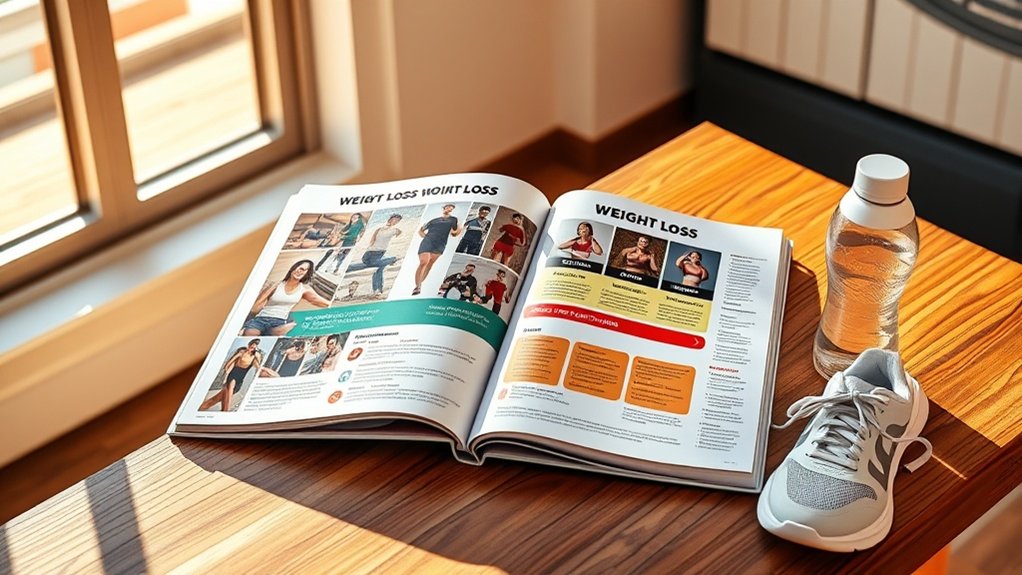Your testosterone-optimized workout should center on compound movements like squats, deadlifts, and overhead presses performed at 75-85% of your one-rep max for 3-4 sets of 6-12 reps. You’ll maximize hormonal response by training these patterns three times weekly with 120-second rest periods between sets. Combine this resistance protocol with strategic HIIT sessions while confirming 7-9 hours of sleep nightly to support hormone synthesis. The following framework addresses age-specific adaptations and precise volume guidelines to prevent cortisol elevation while sustaining your body’s anabolic environment.
Understanding Testosterone’s Role in Muscle Building and Male Fitness

Testosterone functions as your body’s primary anabolic signal, directly regulating muscle protein synthesis rates and determining how efficiently your muscles repair and grow after training stress.
When you’ve got low testosterone levels, you’ll experience reduced muscle mass, diminished strength gains, and increased fatigue that undermines your training consistency.
Here’s what matters: resistance training, particularly compound movements, directly stimulates testosterone production. Strength training sessions boost testosterone levels acutely and support long-term hormonal health.
Since you’re losing 1-3% of testosterone annually after 35, strategic exercise becomes non-negotiable for maintaining muscle and performance capacity.
Testosterone also regulates fat distribution, helping you maintain a leaner physique.
Your workout design must prioritize exercises that increase testosterone levels while maximizing muscle-building stimulus—this dual benefit creates ideal conditions for body composition improvements.
Exercise Types That Maximize Testosterone Production
Your testosterone optimization strategy hinges on two primary exercise modalities: compound movements with adequate resistance and high-intensity interval protocols.
Research demonstrates that multi-joint exercises like squats and deadlifts trigger significant hormonal responses through large muscle mass recruitment.
Meanwhile, HIIT protocols can boost testosterone levels after sessions as brief as six 35-meter sprints.
You’ll maximize these benefits by strategically balancing heavy resistance training with cardiovascular intervals, using 120-second rest periods to enable sufficient recovery for peak performance output.
Compound Movements and Resistance
In regards to maximizing hormonal response during training, compound movements deliver unmatched efficiency by recruiting multiple muscle groups simultaneously.
Exercises like squats, deadlifts, and bench presses trigger testosterone levels to increase by up to 21.6% following a 30-minute resistance training session.
You’ll achieve best results by prioritizing lower body exercises, which produce superior hormonal responses compared to isolated upper body work.
Implement weight lifting protocols using heavier loads with lower repetitions to maximize testosterone production.
Combine this approach with high-intensity interval training for immediate hormonal spikes.
Short rest periods of approximately 60 seconds between sets amplify the testosterone response while supporting muscle growth.
This strategic combination of compound movements and precise rest intervals creates the ideal environment for sustained hormonal increasement.
HIIT and Cardio Balance
While resistance training forms the foundation of testosterone optimization, strategic cardiovascular programming determines whether you’ll sustain or sabotage those hormonal gains.
HIIT protocols dramatically improve testosterone levels—research confirms six 35-meter sprints with 10-second recovery periods trigger significant hormonal elevation. Contrast this with excessive endurance training, which chronically suppresses testosterone production.
Your exercise routine demands cardio balance through these evidence-based protocols:
- HIIT sessions: 2-3 weekly high-intensity workouts (sprint intervals, cycling, rowing)
- Moderate-intensity physical activity: Brisk walking or short jogging sessions paired with strength training
- Volume management: Limit cardio duration to prevent hormonal interference
Short-duration, strategic cardiovascular work boosts testosterone levels when properly integrated.
Focus your energy on explosive, powerful movements rather than marathon-style endurance training. This approach maintains cardiovascular health while preserving your body’s natural ability to further testosterone through targeted physical activity.
Optimal Training Volume, Frequency, and Rest Periods for Hormonal Balance

Maximizing testosterone through resistance training requires strategic manipulation of three critical variables: volume, frequency, and rest intervals.
You’ll achieve ideal training volume by performing 3-4 sets of 6-12 repetitions, emphasizing compound movements that recruit maximum muscle mass.
Structure your resistance training for at least three weekly sessions, distributing upper and lower body exercises evenly.
Implement 1-2 minute rest periods between sets—this duration supports heavier lifts while maintaining adequate recovery for testosterone production.
Integrate high-intensity interval training strategically, using short, explosive bursts followed by brief recovery windows.
Schedule at least one complete rest day weekly to preserve hormonal balance and prevent overtraining.
This combination of frequency, volume, and calculated recovery creates an environment where your testosterone levels can respond ideally to training stress.
Essential Compound Movements for Testosterone Optimization
You’ll maximize testosterone production by prioritizing three foundational compound movements that deliver superior hormonal responses compared to isolation exercises.
Deadlifts activate the most muscle mass simultaneously, squats engage your entire lower body while triggering significant testosterone spikes of up to 21.6%, and overhead presses stimulate upper-body musculature through multi-joint coordination.
These movements form the core of any testosterone-optimized training program, with each exercise providing distinct biomechanical advantages that compound your hormonal benefits.
Deadlifts: Full-Body Testosterone Activation
Because deadlifts recruit over 200 muscles simultaneously across the posterior chain, lower body, and core stabilizers, they trigger one of the most substantial acute testosterone responses available through resistance training.
This weight training movement raises hormone levels through mechanical tension and metabolic stress, creating ideal conditions to increase muscle mass and boost your testosterone levels.
To maximize deadlift effectiveness for hormonal optimization:
- Execute 3-5 sets of 3-6 repetitions at 80-90% 1RM to generate sufficient intensity for testosterone elevation
- Rest 3-4 minutes between sets to allow phosphocreatine replenishment and maintain force output
- Incorporate high intensity interval protocols post-deadlifts to extend the anabolic window
Proper hip hinge mechanics and neutral spine positioning guarantee you’re targeting the correct muscle groups while minimizing injury risk.
Squats: Multi-Muscle Group Engagement
When you descend into a full squat, your body activates over 200 muscle fibers across the quadriceps, hamstricular complex, gluteal group, and deep core stabilizers—creating a mechanical tension stimulus that boosts serum testosterone levels by 15-25% within 30 minutes post-exercise.
This compound movement triggers your anabolic response through substantial loading parameters, directly promoting muscle growth and protein synthesis.
Heavy resistance training with squats optimizes hormonal balance by engaging multiple muscle groups simultaneously, maximizing your endocrine output.
You’ll experience improved athletic performance while maintaining bone density—critical factors as natural testosterone production declines with age.
Your overall metabolic health improves through regular squat implementation, establishing a foundation for sustained strength development and functional capacity that translates beyond the gym into daily performance demands.
Overhead Press Technique Benefits
The overhead press delivers a concentrated hormonal stimulus by recruiting your anterior and medial deltoids, triceps brachii, upper trapezius, and serratus anterior under maximal vertical loading conditions.
This compound movement generates superior muscle activation compared to isolation exercises, directly influencing testosterone levels through mechanical tension and metabolic stress. Your hormonal response intensifies when you prioritize progressive overload with 75-85% of your one-rep max.
Proper overhead press execution improves testosterone optimization through:
- Heavy loading protocols (3-6 repetitions) that maximize neuromuscular recruitment and anabolic signaling
- Full range of motion from collarbone to lockout, making sure complete muscle fiber engagement
- Controlled eccentric phases that increase time under tension and muscle damage markers
Your upper body strength gains from resistance training with the overhead press correlate with sustained testosterone production, making it essential for hormonal balance.
Lifestyle Factors: Sleep, Stress Management, and Nutrition for Hormone Support
Although training variables receive significant attention in workout programming, lifestyle factors exert likewise powerful influences on testosterone production and muscle adaptation.
You’ll need 7-9 hours of sleep nightly to optimize testosterone levels and facilitate tissue repair—sleep deprivation directly shakes hormonal health and recovery mechanisms.
Implement stress management protocols, as chronic cortisol elevation suppresses testosterone synthesis and compromises training adaptations. Engaging in stress-reducing activities you genuinely enjoy creates measurable hormonal improvements.
Your nutrition strategy must prioritize a balanced diet featuring adequate healthy fats, complete proteins, and essential micronutrients.
Focus specifically on zinc and vitamin D intake through nuts, seeds, and fatty fish—these nutrients serve as cofactors in testosterone biosynthesis.
These lifestyle modifications aren’t supplementary considerations; they’re fundamental requirements for maximizing your hormonal response to resistance training.
Age-Specific Training Strategies and Avoiding Overtraining

After age 35, your testosterone production declines 1-3% annually, necessitating strategic programming adjustments that address both hormonal optimization and recovery capacity.
Age-specific training demands prioritization of compound movements—squats, deadlifts, and presses—which maximally stimulate testosterone levels through large muscle recruitment patterns.
Your hormonal responses depend critically on managing workout volume and recovery time. Implement 120-second rest intervals between sets to optimize acute testosterone increasement while preventing overtraining syndrome.
Extended recovery periods between resistance training sessions become non-negotiable as you age.
Monitor these overtraining indicators:
- Persistent fatigue despite adequate sleep
- Declining strength performance across consecutive sessions
- Furtherd resting heart rate and compromised recovery metrics
Integrate low-intensity steady-state cardio to maintain cardiovascular health without compromising hormonal balance.
Strategic volume periodization prevents excessive training stress that suppresses testosterone production.
Frequently Asked Questions
What Type of Exercise Is Best for Boosting Testosterone?
You’ll boost testosterone most effectively through high-intensity interval training and resistance training featuring compound movements like squats and deadlifts. Combine weight lifting with bodyweight exercises and strength training, while incorporating moderate aerobic exercise for ideal hormonal adaptation.
How Many Push-Ups a Day to Increase Testosterone?
You don’t need hundreds daily—aim for 3-4 sets of 10-20 push-ups with proper form. Push-up variations targeting different muscles amplify testosterone’s impact. This bodyweight exercise benefits endurance and muscle growth, making consistent daily push-up goals more effective than excessive volume.
What Is the Best Workout for TRT?
You’ll maximize testosterone therapy benefits through strength training focused on compound movements like squats and deadlifts. Perform resistance exercises three times weekly using high intensity workouts with 60-120 second rest periods to build muscle mass and optimize weight lifting results.



